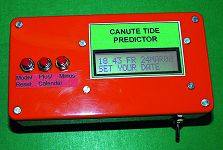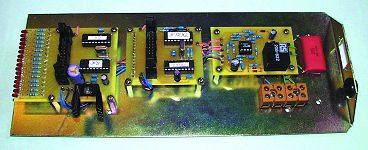
Our PIC-powered predictor uses a sophisticated program which has been derived from many years of experimentation on the part of its designer, and offers a perfectly acceptable indication of high and low tides. The accuracy is estimated as approximately one hour over a five year simulated period: many predictions were much more accurate. Easy to build and self-contained, comprehensive two-line LCD display. Not intended for critical/ life-dependent forecasting use. Free source code available from our FTP site as always.

Simple to build and ideal for beginners, this auto bedside light will be ideal for the young or frail. It is sound-activated, and just a gentle tap or a clap will operate a safe, low-voltage bulb for several minutes. Also has security applications. Battery operated.

Intended for experimenters, this project is a highly-sensitive meter with HV power supply which measures the electric field that exists between the upper atmosphere and earth. Sometimes it can be as much as 200V, one metre above ground! This project is based on simple principles and includes a variable 300V supply, which enables the high-impedance field to be measured.

Concluding our constructional project for an 8/16 channel 2-wire signalling link, with optional interface for a private phone system. The system provides two-way on-off communications for 8 or 16 channels via a two-wire link, and can be adapted for many applications including security or model railroad control. An interface module is described in Part 2, which enables the project to be used for realising a private internal telephone network.
Also in this issue: Circuit Surgery describes a common-sense and logical approach to fault-finding, Interface investigates power available from PC serial and parallel ports, Net Work looks at CompuServe, New Technology Update outlines the latest techniques in fuel cell technology.